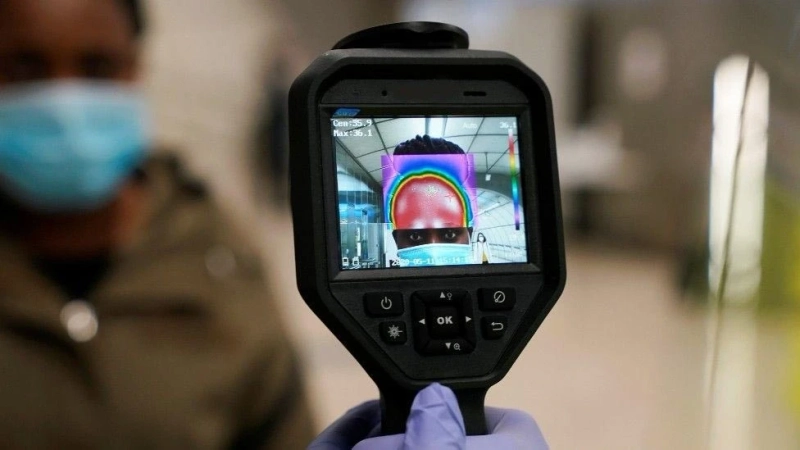In Singapore, a city known for its commitment to safety and innovation, the integration of advanced technologies in surveillance systems has become imperative. Among these technologies, thermal cameras have emerged as powerful tools in enhancing security measures. In this article, we will explore the significant role of thermal cameras in Singapore's surveillance systems, focusing on their applications, benefits, and impact on security protocols.
Understanding Thermal Imaging Technology:
Thermal imaging technology is a cutting-edge method used to capture infrared radiation emitted by objects and convert it into visible images. Unlike traditional cameras that rely on visible light, thermal cameras detect heat signatures, allowing them to produce images even in complete darkness or adverse weather conditions.
This technology is based on the principle that all objects emit infrared radiation, and the intensity of this radiation varies depending on the object's temperature. By detecting these variations in temperature, thermal cameras can create detailed thermal images, which are invaluable for surveillance purposes.
Applications of Thermal Cameras in Singapore:
1.) Perimeter Security: Thermal cameras are commonly used to monitor and secure the perimeters of critical infrastructure such as airports, seaports, and government buildings. By detecting heat signatures of intruders or unauthorized individuals attempting to breach the perimeter, thermal cameras enable security personnel to respond promptly to potential threats.
2.) Border Surveillance: In Singapore, thermal cameras play a crucial role in enhancing maritime security by monitoring the country's coastline and territorial waters. By detecting heat signatures of vessels and individuals, thermal cameras help authorities identify suspicious activities such as smuggling or illegal border crossings.
3.) Law Enforcement: Thermal cameras are widely used by law enforcement agencies in Singapore for various purposes, including surveillance, search and rescue operations, and crime prevention.
Thermal monoculars, handheld thermal imaging devices, are often used by police officers to conduct covert surveillance and gather intelligence during operations.
4.) Wildlife Monitoring: Singapore is home to diverse wildlife, including endangered species such as pangolins and otters. Thermal cameras are used to monitor wildlife habitats, track animal movements, and detect poaching activities.
By providing real-time thermal imaging data, these cameras help conservationists and wildlife authorities protect Singapore's natural heritage.
Benefits of Thermal Cameras in Surveillance Systems:
1.) Enhanced Detection Capabilities: Thermal cameras can detect heat signatures emitted by objects and individuals, allowing for reliable detection even in low-light conditions or adverse weather environments.
2.) Improved Situational Awareness: By providing real-time thermal imaging data, thermal cameras enhance situational awareness for security personnel, enabling them to identify and respond to potential threats quickly and effectively.
3.) Cost-Effective Solution: While thermal imaging technology was once prohibitively expensive, advancements in technology have made thermal cameras more affordable and accessible, making them a cost-effective solution for enhancing security measures in Singapore.
4.) Versatility and Adaptability: Thermal cameras are highly versatile and can be deployed across a wide range of security applications, from perimeter monitoring to wildlife conservation. Their adaptability makes them invaluable tools for addressing various security challenges in Singapore.
Integration of Thermal Monoculars in Security Operations:
Thermal monoculars are handheld thermal imaging devices used by security personnel for surveillance and reconnaissance missions. These devices offer portability, flexibility, and ease of use, making them ideal for law enforcement, border security, and wildlife monitoring applications.
In Singapore, thermal monoculars are commonly used by police officers, security guards, and wildlife conservationists to conduct covert surveillance, gather intelligence, and enhance situational awareness during operations.
Impact on Singapore's Security Infrastructure:
The integration of thermal cameras in Singapore's surveillance systems has had a significant impact on the country's security infrastructure.
By enhancing detection capabilities, improving situational awareness, and enabling proactive security measures, thermal cameras have become indispensable tools for safeguarding critical infrastructure, protecting national borders, and ensuring public safety.
As Singapore continues to invest in security technologies and innovation, thermal cameras will play a pivotal role in maintaining the country's security and resilience.
Conclusion:
In conclusion, thermal cameras have become integral components of Singapore's surveillance systems, contributing to enhanced security measures across various sectors.
From perimeter security and border surveillance to law enforcement and wildlife conservation, thermal cameras offer unparalleled capabilities that improve detection, monitoring, and response capabilities.
As Singapore continues to prioritize safety and security, the role of thermal cameras in surveillance systems will only grow in importance, ensuring the country remains at the forefront of innovation in security technology.


